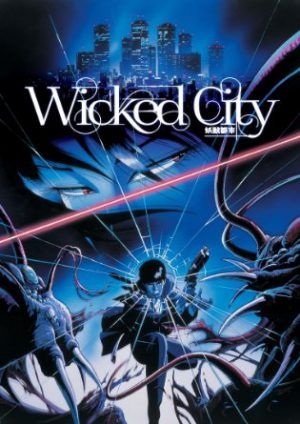

Folklore has it that holly can be used to guard against Oni. Monkey statues are also thought to guard against oni, since the Japanese word for monkey, saru, is a homophone for the word for "leaving". During the Setsubun festival, people throw soybeans outside their homes and shout " Oni wa soto! Fuku wa uchi!" ("鬼は外!福は内!", " Oni go out! Blessings come in!"). Some villages hold yearly ceremonies to drive away oni, particularly at the beginning of Spring.

No two stories about oni are exactly alike except for one thing: oni are always the villains of mankind. These oni are the stuff of legends and fairy tails, countless stories of lords and ladies, warriors and rogues that make up Japanese mythology.

These transformed oni are the ones most legends tell about, and the ones who pose the most danger to humankind. Occasionally, when a human is so utterly wicked that his soul is beyond any redemption, he transforms into an oni during life, and remains on Earth to terrorize the living.
#ONI X BLUEINGREEN FULL#
Hell is full of oni, and they make up the armies of the great generals of the underworld. An oni’s job is to mete out horrible punishments such as peeling off skin, crushing bones, and other torments too horrible to describe to those who were wicked (but not quite wicked enough to be reborn as demons themselves). They become the ogreish and brutal servants of Great Lord Enma, ruler of Hell, wielding iron clubs with which they crush and destroy humans solely for enjoyment. Oni are born when truly wicked humans die and end up in one of the many Buddhist Hells, transformed into Oni. The Japanese capital itself moved northeast from Nagaoka to Kyoto in the 8th century. Enryakuji, on Mount Hiei northeast of the center of Kyoto, and Kaneiji, in that direction from Edo Castle, are examples. Temples are often built facing that direction, and Japanese buildings sometimes have L-shaped indentions at the northeast to ward oni away. Based on the assignment of the twelve zodiac animals to the cardinal directions, the kimon was also known as the ushitora (丑寅), or "Ox Tiger" direction, and the oni's bovine horns and cat-like fangs, claws, and tiger-skin loincloth developed as a visual depiction of this term. The northeast direction was once termed the kimon (鬼門, "demon gate"), and was considered an unlucky direction through which evil spirits passed. The invisible oni eventually became anthropomorphized and took on its modern, ogre-like form, partly via syncretism with creatures imported by Buddhism, such as the Indian rakshasa and yaksha, the hungry ghosts called gaki, and the devilish underlings of Enma-Ō who punish sinners in Jigoku (Hell).They share many similarities with the Arabian Jinn.Īnother source for the oni's image is a concept from China and Onmyōdō. Thus the Chinese character 鬼 (pinyin: guǐ Jyutping: gwai 2) meaning "ghost" came to be used for these formless creatures. These nebulous beings could also take on a variety of forms to deceive (and often devour) humans. The word "oni" is sometimes speculated to be derived from on, the on'yomi reading of a character (隠) meaning to hide or conceal, as oni were originally invisible spirits or gods which caused disasters, disease, and other unpleasant things. It can also be used in the sense of "strong beyond strong", or having one's natural quality enhanced or supplemented by the use of some tool. This image leads to the expression "oni with an iron club" (鬼に金棒, oni-ni-kanabō), that is, to be invincible or undefeatable. They are often depicted wearing tiger-skin loincloths and carrying iron clubs called kanabō (金棒). They are ferocious demons, bringers of disaster, spreaders of disease, and punishers of the damned in Hell. All oni possess extreme strength and constitution, and many of them are also accomplished sorcerers. They wear loincloths made of the pelts of great beasts.
#ONI X BLUEINGREEN SKIN#
Their skin may be any number of colors, but red and blue are particularly common.

They are humanoid for the most part, but occasionally, they are shown with unnatural features such as odd numbers of eyes or extra fingers and toes. Depictions of oni vary widely but usually portray them as hideous, gigantic ogre-like creatures with sharp claws, wild hair, and two long horns growing from their heads. Oni are one the greatest icons of Japanese folklore. They are popular characters in Japanese art, literature and theatre. Oni (鬼, Oni) are a kind of yōkai from Japanese folklore, variously translated as demons, devils, ogres or trolls.


 0 kommentar(er)
0 kommentar(er)
